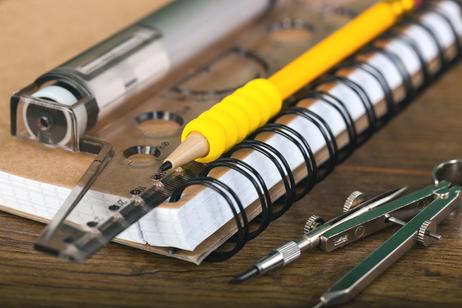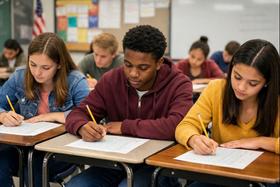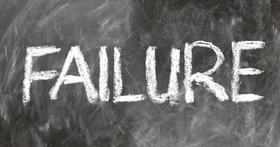The American public school system is far from perfect, but the list of top issues is constantly changing. Some say that the emphasis on standardized testing is destroying the quality of public education while others believe that schools are too crowded and parents are too uninvolved. The fact of the matter is that each public school system has its own problems depending on where it is located, the local demographics, the amount of funding it receives, and myriad other factors. Keep reading to learn about some of the biggest problems currently facing public high schools in particular.
The Top 3 Issues Affecting Public High Schools
If you were to ask parents from one hundred different school districts about the problems they see with the public school system, you would probably get 100 different responses. Although there are many different problems with the American public school system, recent data collected from the Programme for International Student Assessment (PISA) shows that the academic performance of American students is significantly lower than their international counterparts. School systems are evaluated on a wide variety of factors, but there are some issues that tend to fly under the radar which still have a significant impact. Here are the top three.
1. Students don’t spend enough time in school.
The requirement for the number of school days varies slightly from one state to another. Currently, thirty of the U.S. states have a 180-day calendar – this requires students to be in school for approximately 49% of the year. Two states have a 181-day calendar, and the rest have somewhere between 171 and 179 school days on the calendar for each year. If you take a closer look at the numbers, you’ll find that the states that have the lowest requirements for scheduled school days spend more days out of school than in school. This information doesn’t mean much until you compare it to international standards.
Many countries outside the United States have much higher requirements for school days. Canadian requirements are usually around 188 days and students in England have 190 scheduled school days. But if you travel a little further from the U.S. you’ll come to China where there are 221 school days and Japan where there are 223. Korea has the highest number of scheduled school days at 225. If you take the average, most international school systems require a full two weeks’ worth of school days more than the United States – the international average is 193 scheduled school days.
It isn’t enough to just look at the number of days students spend in school – you also have to take a look at how long each school day is. The average American student spends about 7 to 8 hours a day in school while Korean high school students might be in school for as many as 16 hours a day. This is a huge contrast to students in England who may spend as little as 6.5 to 7 hours in school each day. Interestingly, the country with the longest school day and the highest number of scheduled school days (Korea) also has the highest international ranking for subjects like math and science.
All things considered, there are just as many people in the U.S. who believe that their children spend too much time in school as there are who think their kids don’t spend enough time in school. Disparities between the number of days a child attends school and the length of those school days may account to some degree for differences in academic performance from one state to another. Many of the people who argue for longer school days mention international competitiveness as a motivating factor, but there are other benefits to consider. Some children simply need more time to learn and many need individualized attention – a shorter school day doesn’t allow enough time for curriculum and individual time spent with students.
2. The public has no respect for the teaching profession.
In the United States, teachers are woefully underpaid and yet they are expected to do twice the work they actually get paid for. For a teacher, the day doesn’t end with the last bell – most teachers stay after school for several hours or they take their work home, grading papers and developing lesson plans late into the night. Furthermore, many teachers struggle with inadequate funding for educational programs and they end up spending a lot of money out of their own pockets to benefit their students. But why are teachers so undervalued and why is American interest in education continuing to decline? In Finland, it is considered a great honor to be a teacher and, in Singapore, it is a highly selective field of work.
Research conducted by the Pew Research Center revealed a declining interest in education among Americans. In regard to which topics had the most interest, the top three were the U.S. economy, terrorism, and job creation. These topics are certainly worthy of address, but it is often overlooked that some of these are actually relevant to the quality of the American education system. For example, a report published by the McGraw-Hill Research Foundation indicated that if the United States could increase their PISA scores by just 25 points over the course of the next two decades, it could lead to a serious financial gain for the U.S. economy – as much as $41 trillion over the lifetime of the generation currently being born.
3. There is not enough emphasis on arts education.
Many schools simply don’t receive enough funding so they must make difficult decisions about which programs to fund and which programs to cut. Unfortunately, it is often arts programs that get the ax. In fact, while she was the First Lady, Michelle Obama reported that as many as 6 million school-age children had no access to arts education and another 6 million only had minimal access. In many schools (including New York City public schools), there are no art teachers which means no art programs. In cities around the country, public schools are closing their doors which means that thousands of teachers are losing their jobs and many programs are losing their funding.
This video discusses the arts and education in American public schools.
In many school systems, the arts are considered less important than math and science. Studies have shown, however, that the arts provide significant benefits for students. Art programs should not be considered a luxury – they are important for helping children to solve problems and to create. Art also helps children to develop motor skills, to improve their problem solving and critical thinking skills, to develop visual-spatial skills, and to develop language. Arts programs also help students to develop cultural awareness which is very important in as American society becomes increasingly more diverse. There is also a strong correlation between arts education and improved academic performance in other aspects of education such as math and science.
The sad truth is that there are many problems in the American education system. Some of these problems are overwhelmingly large and often interlinked with other issues. Unfortunately, there may not even be much that you can do personally to improve these problems. What you can do is educate yourself and become an advocate for the American public education system.
Questions? Contact us on Facebook. @publicschoolreview











